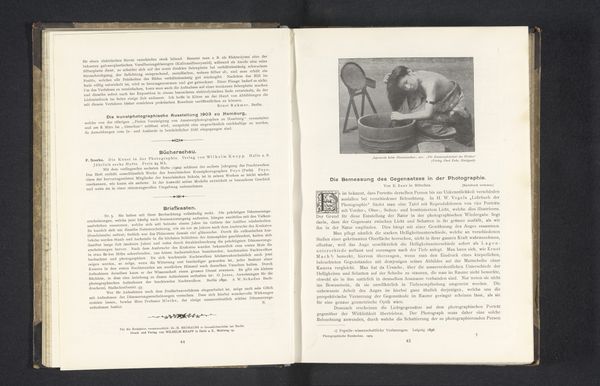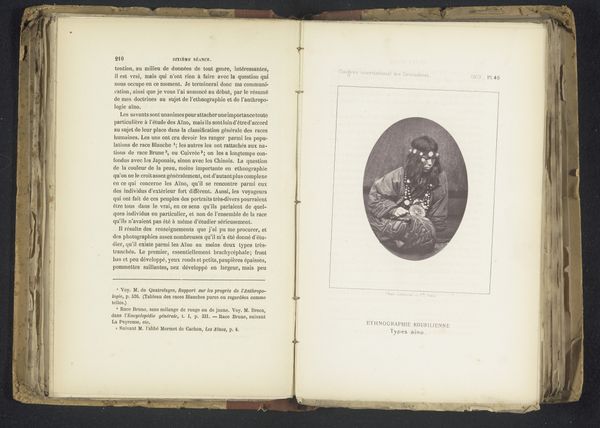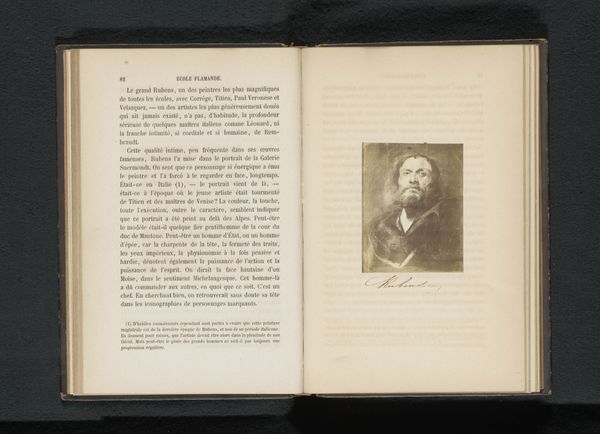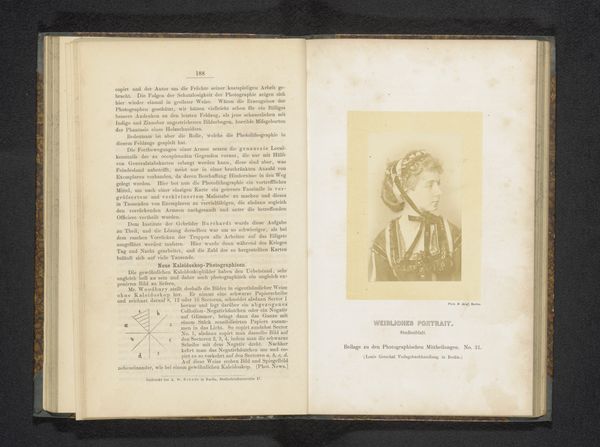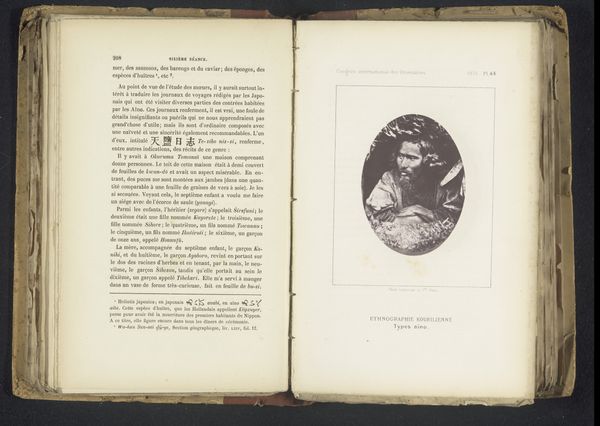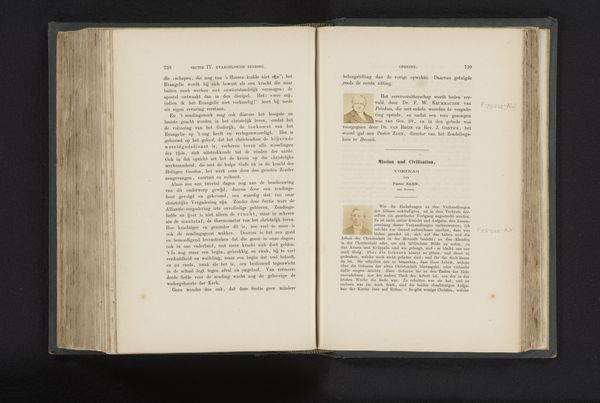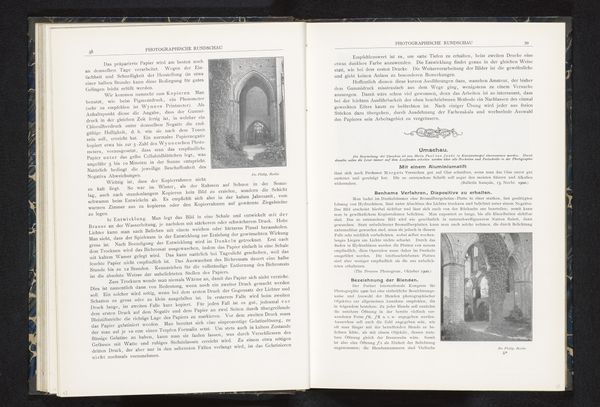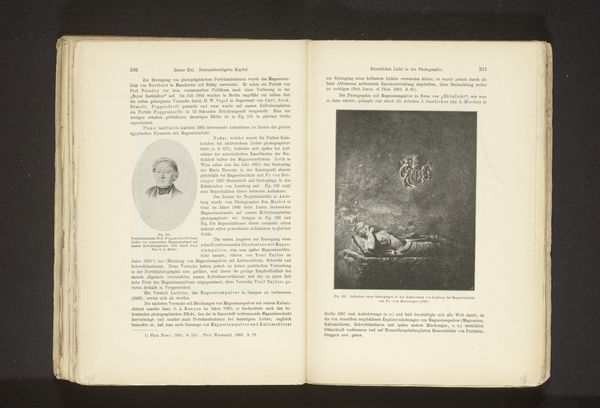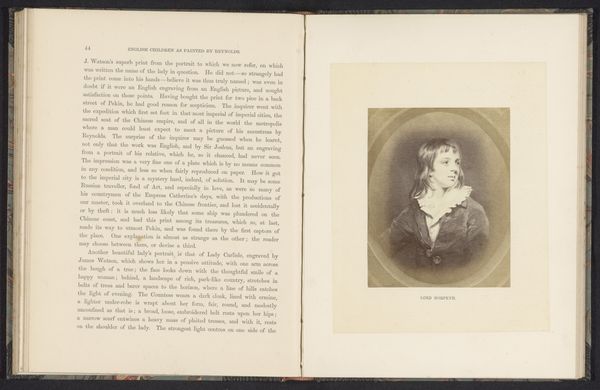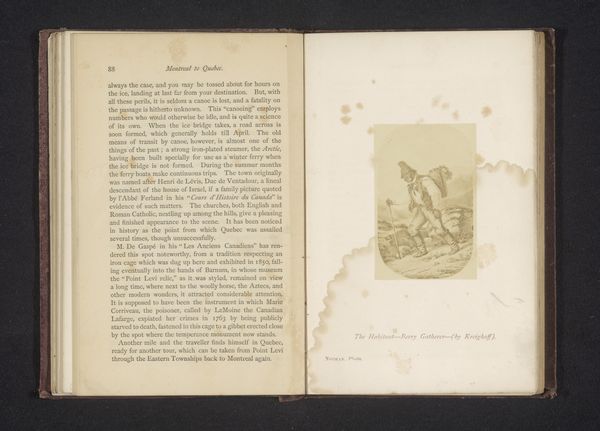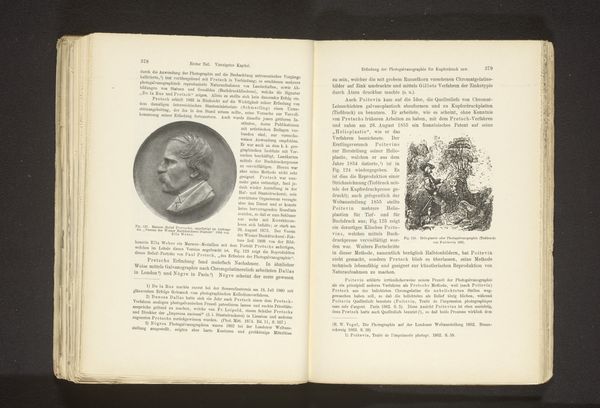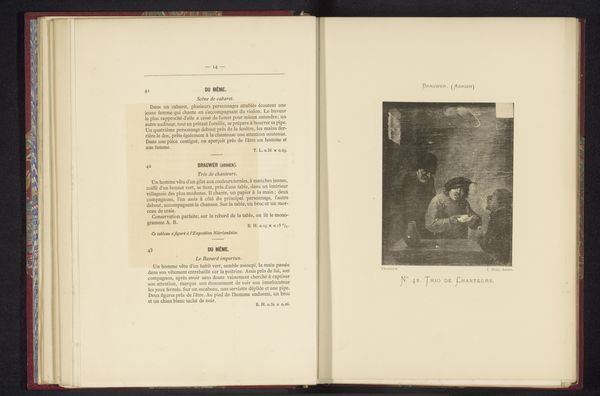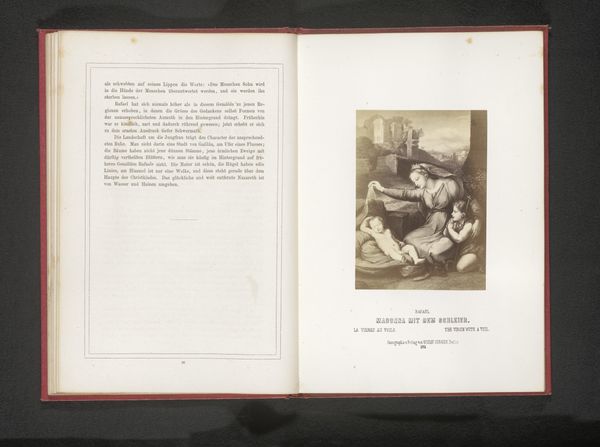
print, photography
#
portrait
# print
#
photography
#
history-painting
Dimensions: height 127 mm, width 90 mm
Copyright: Rijks Museum: Open Domain
Curator: So, this open book displays an artwork titled "Gezicht op een reliëf van een onbekende man," dating from before 1900. It’s a photographic print currently held at the Rijksmuseum. It almost gives off an official, academic kind of vibe. What's your take? Editor: What I immediately notice is that it’s a photograph OF a relief, rather than a photograph itself presented as art. How do you interpret that choice of presentation and medium? Curator: I think the key lies in recognizing the photograph's dual nature here. Yes, it documents a pre-existing relief. However, this is more than mere reproduction. Consider the historical context. Photography in the late 19th century was still developing, both technically and artistically. So, printing a photograph of a sculpture emphasizes the mechanical processes that democratized image making. Editor: Democratizing image making, I like that way to see it! Curator: It prompts questions about authorship and authenticity. Is the artistry in the original relief, or in the photographer's skill in capturing and presenting it? Furthermore, what processes might have been involved in producing a book from that period with integrated images? We have to acknowledge the bookmaking craft of this object! Editor: So, it highlights the labor, both physical and artistic. That also changes the work's original intent by distributing it in such a fashion, doesn't it? Curator: Precisely! Consider how these images, originally presented for perhaps a limited audience, get disseminated more widely through printed matter. And with it, how is our perception shaped not only of this one man in relief, but of similar portraits found in popular illustrated material, for a wider consumer market? What did you think of the portrait aspect itself? Editor: I hadn’t initially considered the consumption aspect or the material transformation involved. This really pushes me to think about value in terms of process rather than pure aesthetics.
Comments
No comments
Be the first to comment and join the conversation on the ultimate creative platform.
